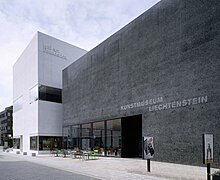
Liechtenstein, officially the Principality of Liechtenstein, is a doubly landlocked German-speaking microstate in the Central European Alps, between Austria in the east and north and Switzerland in the west and south. Liechtenstein is a semi-constitutional monarchy headed by the prince of Liechtenstein of the House of Liechtenstein, currently led by Hans-Adam II. It is Europe's fourth-smallest country, with an area of just over 160 square kilometres and a population of 40,023. It is the world's smallest country to border two countries, and is one of the few countries with no debt.

Vaduz is the capital of Liechtenstein and also the seat of the national parliament. The village, which is located along the Rhine, has 5,696 residents. The most prominent landmark of Vaduz is Vaduz Castle, perched atop a steep hill overlooking the village. It is home to the reigning prince of Liechtenstein and the Liechtenstein princely family. The village's distinctive architecture is also displayed in landmarks such as the Cathedral of St. Florin, Government House, Village Hall, the National Art Gallery, as well as the National Museum. Although Vaduz is the best-known village in the principality internationally, it is not the largest; neighbouring Schaan has a larger population.

Blinky Palermo, artistic name of Peter Schwarze, was a German abstract painter. He was inspired by painters like Kazimir Malevich, Barnett Newman and Ellsworth Kelly.
Bojan Šarčević is a Serbian visual artist and educator. His work includes video, installations, site-responsive architectural interventions, photographic collage, more or less abstract sculpture, and printed publications.

The Liechtenstein Museum is a private art museum in Vienna, Austria. It contains much of the art collection of its owners, the Princely Family of Liechtenstein, rulers of the principality of Liechtenstein. It includes important European works of art, forming one of the world's leading private art collections. Its highlight used to be Leonardo da Vinci's portrait of Ginevra de' Benci, which was acquired in 1967 by the National Gallery of Art in Washington, D.C.

The National Museum of Modern Art, Tokyo, also known as MOMAT, is the foremost museum collecting and exhibiting modern Japanese art. The museum, in Chiyoda, Tokyo, Japan, is known for its collection of 20th-century art and includes Western-style and Nihonga artists. It has a branch, the National Crafts Museum, in the city of Kanazawa.

Leiko Ikemura is a Japanese-Swiss artist who works in a variety of mediums, including oil painting, sculpture, and watercolor. She divides her time between Cologne and Berlin, teaching painting at the Hochschule der Künste in Berlin. Active on the international art scene since the 1970s, she is known for her work within the Neo-Expressionism movement of the 1980s, as well as her continually evolving style. Much of her oeuvre features elements of symbolism, involving the creation of magical universes blend elements of her animals, humans, and plants. Her work has been featured in a number of solo exhibitions in Japan and Europe, and is held in the permanent collections of major institutions such at the Centre Pompidou, Kunstmuseum Basel, Kunstmuseum Bern, Kunsthaus Zurich, and the National Museum of Modern Art, Tokyo. In 2023, she had her first solo exhibition in Mexico at the Museo de Arte de Zapopan.

The Kunstmuseum Basel houses the oldest public art collection in the world and is generally considered to be the most important museum of art in Switzerland. It is listed as a Swiss heritage site of national significance.
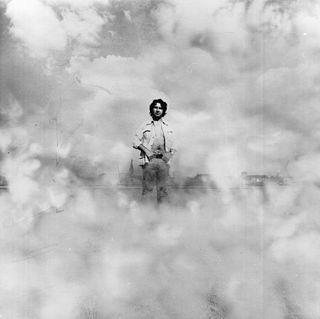
Gotthard Graubner was a German painter, born in Erlbach, in Saxony, Germany.
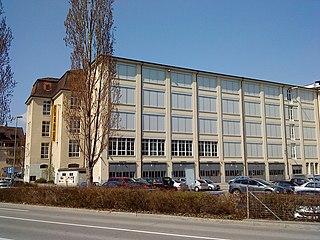
The Hallen für Neue Kunst was a museum for contemporary art, especially 'New Art' since 1965. The institute was located in Schaffhausen, Switzerland, on the banks of the river Rhine. It was founded and established in 1982/83 by the artist Urs Raussmüller. Being convinced that New Art needed time and space to unfold its impact, he intended to create a permanent situation for major, predominantly large-scale works by American and European artists. As one of the first transformations of an industrial building into an art museum, the Hallen für Neue Kunst were considered to be a model for museums all over the world.

The Kunstmuseum Bonn or Bonn Museum of Modern Art is an art museum in Bonn, Germany, founded in 1947. The Kunstmuseum exhibits both temporary exhibitions and its collection. Its collection is focused on Rhenish Expressionism and post-war German art. It is part of Bonn's "Museum Mile".
Marisa Merz was an Italian artist and sculptor. In the 1960s, Merz was the only female protagonist associated with the radical Arte povera movement. In 2013 she was awarded the Golden Lion for Lifetime Achievement at the Venice Biennale. She lived and worked in Turin, Italy.
The August Macke Prize, named after the painter August Macke, was given the first time in 1959 by the districts Arnsberg, Brilon, Meschede and Olpe in the region of the Hochsauerland, Germany.

Antje (-Maria) von Graevenitz, born Ludwig is a German art historian, art critic, educator and author.

Eduarda Emilia Maino, known as Dadamaino, was an Italian visual artist and painter. She was a member of the Milanese avant-garde of the 1960s.

Gary Kuehn is an American artist who pioneered the Postminimal and Process Art movements of the 1960s.

Christian Georg Kerez is a Swiss architect, architectural photographer and professor.
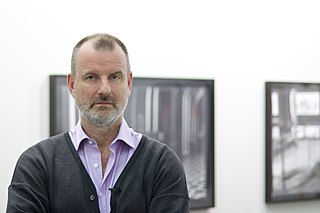
Volker Diehl is a German gallery owner. He mainly exhibits contemporary art in the gallery "DIEHL" (Berlin).
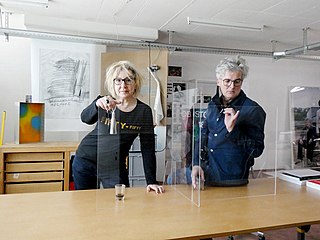
RELAX is an artist collective founded by Marie-Antoinette Chiarenza and Daniel Hauser.

Georg Malin is a Liechtensteiner artist, sculptor, historian and politician. Between 1974 and 1978, Malin served as member of the governing council in the Liechtenstein government, for the Progressive Citizens' Party (FBP). He previously served as a member of the Landtag of Liechtenstein from 1966 to 1974, where he was also a member on the parliamentary delegation to the European Council.
